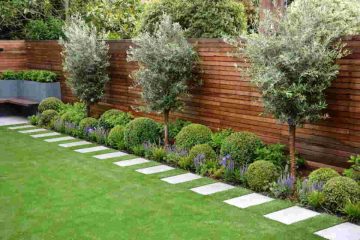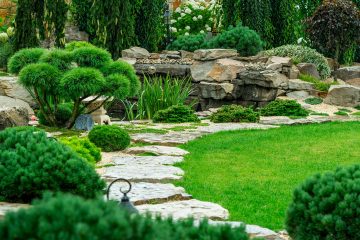When a new landscaping project is being discussed between a landscaper from Principal Landscapes and a homeowner, one of the critical decisions they must make is what types of paving they will include in the landscape design. This decision will need to take into account several points, which include the size of the garden, the available budget, who will be using the garden, and the aesthetics that any paving choice creates.
A wide variety of materials can be used for paving, and often this is more of a hindrance than a help when trying to choose between them. However, what we have done here is pare them down to just 9 of the most popular paving materials to allow you to consider which materials you would like to use for the paving in your new landscape design.
Bricks: Most of us see bricks in constructions like walls; in most cases, these tend not to be especially decorative. However, using bricks for paving with a bit of added imagination can result in a pathway that is robust and durable and has numerous patterns created by how the bricks are laid.
Limestone: Limestone blocks are a preferred choice for landscaping paving due to their natural beauty, versatility, durability, and cool, non-slip surface. Its timeless look works well with many various styles, and maintenance is fairly easy. However, it should be considered that limestone can require occasional sealing and can sometimes become stained.
Concrete: Concrete paving comes in various shapes and sizes, although the most common is the more simple square paving stones. Options usually exist to select concrete paving stones in different colours to add aesthetic appeal to their durability, as they can also be laid in patterns within the same pathway.
Flagstones: For a highly natural look, flagstones are a great choice. Flagstones are created from sedimentary rocks, and the appeal of this is that no two paving stones are ever likely to look the same. The variety of colours, textures, and shapes adds to their visual appeal, plus their non-slip surfaces add a practical benefit too.
Travertine: This is a cheaper option, but that does not mean they have no benefits. Firstly, they are durable and an environmentally friendly option for those keen on green issues. In addition, they do not retain heat, so are ideal for walking on in gardens that attract the sun.
Marble: If you are seeking a paving option that looks great, is durable, oozes quality, and provides an element of elegance, then marble is your choice. One caveat is that it is one of the pricier paving materials.
Cobblestone: An option pricier than marble but one that offers so many benefits, cobblestone is extremely durable and requires little maintenance. Perhaps its most significant appeal is that it can be used to make paving with impressively artistic patterns.
Porcelain: This clay-based material has a non-porous finish, so porcelain paving stones are ideal for landscape designs with pools or water features. It is also cheaper than paving stones made from natural materials such as marble or sedimentary rock.
Plastic: Plastic pavers are a relatively new concept and are often manufactured as an environmentally friendly way to recycle plastic. Low-cost and practical plastic pavers can be used in just about any area of a landscape design.
Rubber: This is another option for those with green ideals who wish to protect the environment, as most of these are made from recycled rubber products. Relatively inexpensive, they provide a non-slip surface and with some imagination, coloured rubber paving stones can be used to create patterned pathways.


